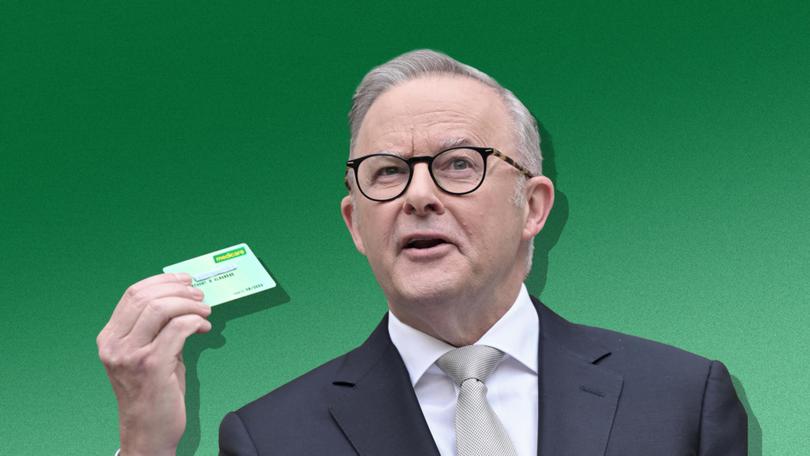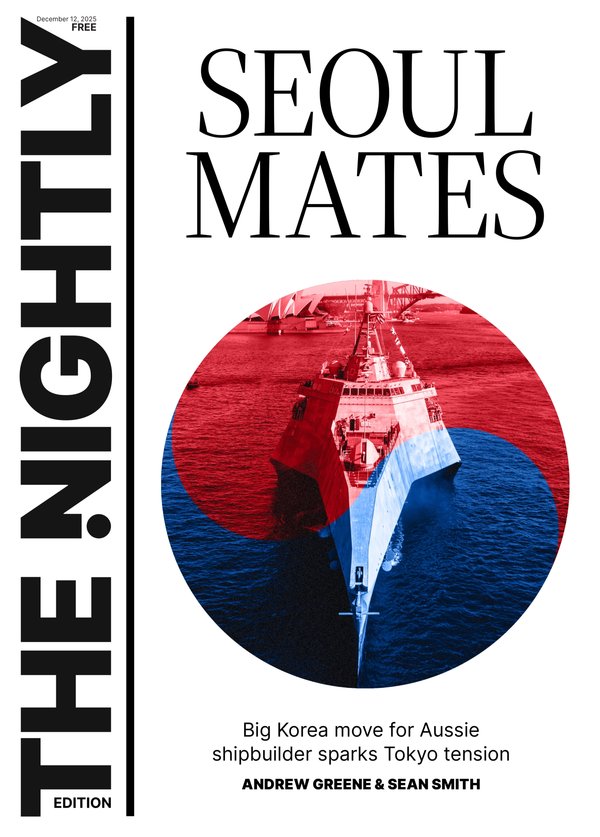AARON PATRICK: The Federal election 2025 scare campaign begins as Labor launches brazen attack on Peter Dutton

Anthony Albanese launched the 2025 election with an attack on his opponent so deceptively brazen that it explains how the Labor Party went from campaign lagger to front-runner in under two months.
Peter Dutton “will start by cutting Medicare and he won’t stop there,” the Prime Minister said outside his Parliament House office after calling the May 3 poll. “We want to keep building. The Liberals and Nationals just want to start cutting”.
Brandishing a Medicare card, Mr Albanese ignored reality. On February 23, the day it was announced, the Coalition matched the government’s $8.5 billion bulk-billing policy.
Sign up to The Nightly's newsletters.
Get the first look at the digital newspaper, curated daily stories and breaking headlines delivered to your inbox.
By continuing you agree to our Terms and Privacy Policy.Later an analysis found most of the money will go to doctors rather than patients, which could have given the Coalition entirely legitimate reasons to oppose it.
New favourites
Over the past month political surveys and the betting markets have shifted towards the Government, demonstrating the popularity of its big-spending promises. Last week, Sportsbet’s favourite was the Coalition. On Friday morning, the Opposition’s odds had slipped to 2.1-to-one.
National polls do not do justice to what will be a State-by-State campaign.
The Coalition leads in Victoria, and is strong in NSW. In Queensland, it has taken a sharp dip over the past month, according to an aggregation of polls collated by analyst Bryan Palmer, likely the result of lavish attention paid to Queenslanders by Mr Albanese and Treasurer Jim Chalmers, including during Cyclone Alfred.
“Labor is in front now in terms of their two-party preferred vote share,” Mr Palmer wrote on Thursday. “This is not enough for a majority Labor government, but it should see Labor somewhat better positioned to form minority government.”
Asked on Friday about the prospect of governing by relying on the support of climate-focused teal independents, who always push for greater spending, Mr Albanese said that such independent backing would not necessary.
“I intend to lead a majority government,” he replied.
In private, the Prime Minister has already boasted that he will increase the party’s two-seat majority.
Coalition priorities
Mr Dutton’s counter-strategy is simple: remind Australians of the economic pain of the past three years.
“The question that Australians need to ask is: are you better off today?” he said on Friday morning.
Ministers looked thrilled when Coalition MPs voted against a tax cut on Wednesday. That evening, Mr Dutton flipped the conversation. His one-year petrol tax cut is perfect for outer-suburban and country voters, and much cheaper than the Labor counterpart.
The plan to lower gas prices by restricting exports was another example of Mr Dutton’s supreme economic pragmatism. For years environmentalists have accused the Coalition of being beholden to the oil and gas industries.
Then Mr Dutton strikes what would be a huge blow to gas-drillers’ profitability. If anyone doubts how worried the industry is, read the statement from its lobby group, which described the policy as a “damaging market intervention that will drive away investment and exacerbate the supply challenges in the longer term”.
Looking for nuclear power
Whether Mr Dutton can shrug off Labor’s “hidden cuts” allegations will be one of the more important tests of his campaign. Even if media outlets ignore them, the narrative is already being pushed on social media ads.
The government has just enough material to sustain the argument. On Thursday the Opposition leader proposed $51 billion in savings, including an end to big hydrogen-energy and housing-construction subsidies.
With government debt forecast to surpass $1 trillion next year, the subsidies were seen by many economists as simplistic and inefficient fixes for structural problems.
But the foundation of the scare campaign is Mr Dutton’s nuclear-power plan. The true cost is unknown, and probably unknowable for years, given it relies on technology under development.
The Government has two lines of attack: if government-owned plants are ever built, they will not provide power until the 2040s; they will cost so much that other services will have to be cut.
While nuclear power gets a lot of love in Liberal circles for its engineering elegance, even the most ardent of Mr Dutton’s supporters and donors wonder if the technical and legal impediments can be overcome, not lest nuclear bans in the States.
Nonetheless, nuclear power is presented as the great threat to Medicare, a lavishly expensive program Mr Dutton did not hesitate to support expanding.
Thus begins the election: with an allegation that a policy that may never exist will destroy one both sides have vowed to protect.

